39 separation of mixtures lab
en.wikipedia.org › wiki › Thin-layer_chromatographyThin-layer chromatography - Wikipedia Thin-layer chromatography (TLC) is a chromatography technique used to separate non-volatile mixtures. Thin-layer chromatography is performed on a sheet of an inert substrate such as glass, plastic, or aluminium foil, which is coated with a thin layer of adsorbent material, usually silica gel, aluminium oxide (alumina), or cellulose. › msjacklynkong › separation-ofSeparation of Mixtures - SlideShare Jan 01, 2014 · Separation of Mixtures 1. Separating MIXTURES 2. Learning Objectives By the end of the lesson, students sbat: • Describe methods of separation and purification for the components of the following types of mixtures: 1. Solid-solid 2. Solid-liquid 3. Liquid-liquid (miscible and immiscible) 3.
en.wikipedia.org › wiki › Gas_chromatographyGas chromatography - Wikipedia Gas chromatography (GC) is a common type of chromatography used in analytical chemistry for separating and analyzing compounds that can be vaporized without decomposition. ...

Separation of mixtures lab
coursehelponline.comCourse Help Online - Have your academic paper written by a ... 100% money-back guarantee. With our money back guarantee, our customers have the right to request and get a refund at any stage of their order in case something goes wrong. › scripts › cdrhCFR - Code of Federal Regulations Title 21 - Food and Drug ... Jul 20, 2022 · Each testing facility shall be of suitable size and construction to facilitate the proper conduct of nonclinical laboratory studies. It shall be designed so that there is a degree of separation that will prevent any function or activity from having an adverse effect on the study. [52 FR 33780, Sept. 4, 1987] › lifestyleLifestyle | Daily Life | News | The Sydney Morning Herald The latest Lifestyle | Daily Life news, tips, opinion and advice from The Sydney Morning Herald covering life and relationships, beauty, fashion, health & wellbeing
Separation of mixtures lab. of Mixtures Using Different Techniques (Theory ... Mixtures are either homogeneous or heterogeneous. Homogeneous mixtures are uniform in composition, but heterogeneous mixtures are not uniform in composition. Air is a homogeneous mixture and oil in water is a heterogeneous mixture. Homogeneous and heterogeneous mixtures can be separated into their components by several physical methods. › lifestyleLifestyle | Daily Life | News | The Sydney Morning Herald The latest Lifestyle | Daily Life news, tips, opinion and advice from The Sydney Morning Herald covering life and relationships, beauty, fashion, health & wellbeing › scripts › cdrhCFR - Code of Federal Regulations Title 21 - Food and Drug ... Jul 20, 2022 · Each testing facility shall be of suitable size and construction to facilitate the proper conduct of nonclinical laboratory studies. It shall be designed so that there is a degree of separation that will prevent any function or activity from having an adverse effect on the study. [52 FR 33780, Sept. 4, 1987] coursehelponline.comCourse Help Online - Have your academic paper written by a ... 100% money-back guarantee. With our money back guarantee, our customers have the right to request and get a refund at any stage of their order in case something goes wrong.



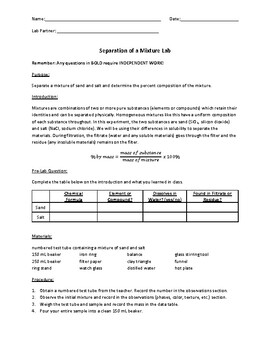

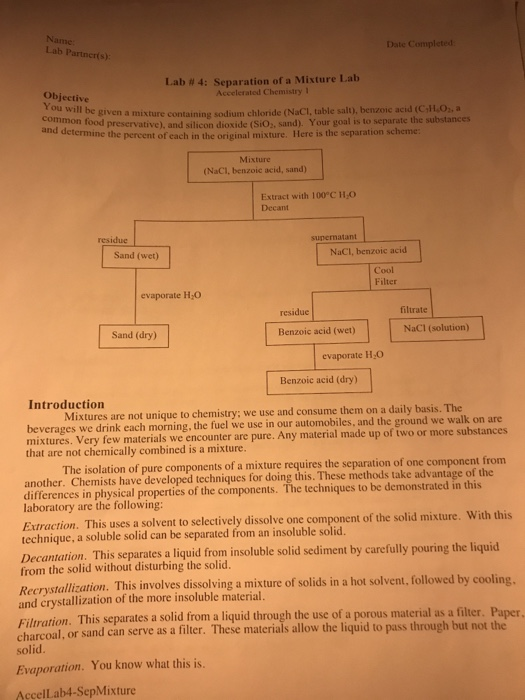


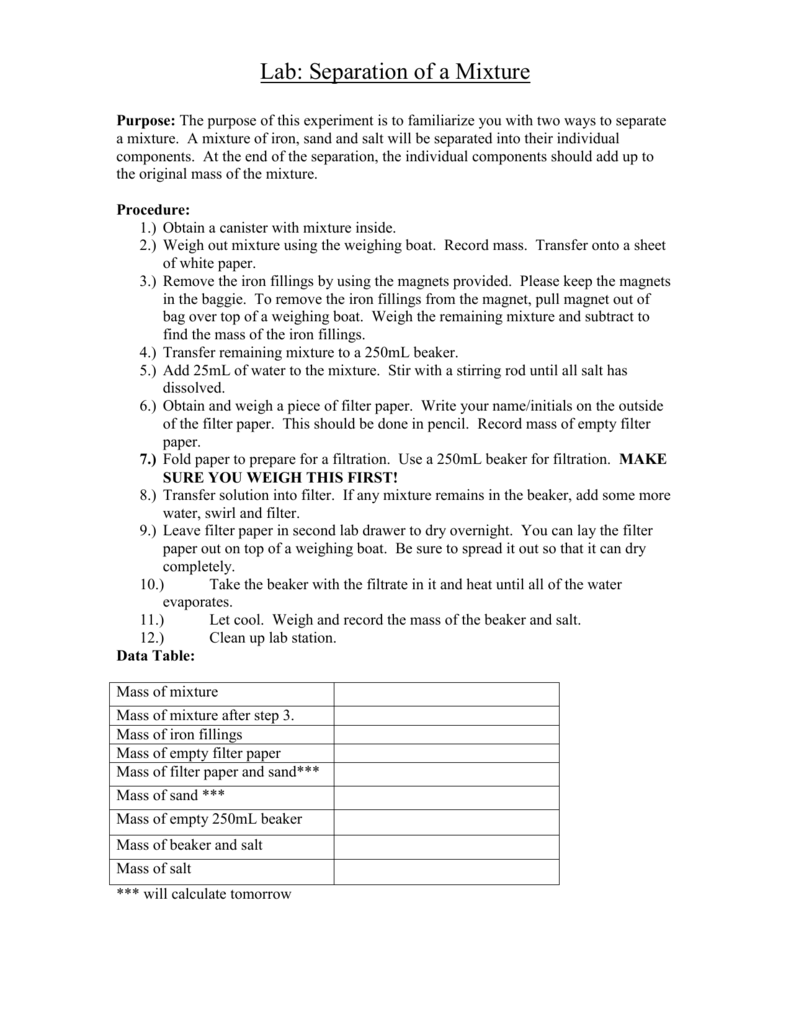

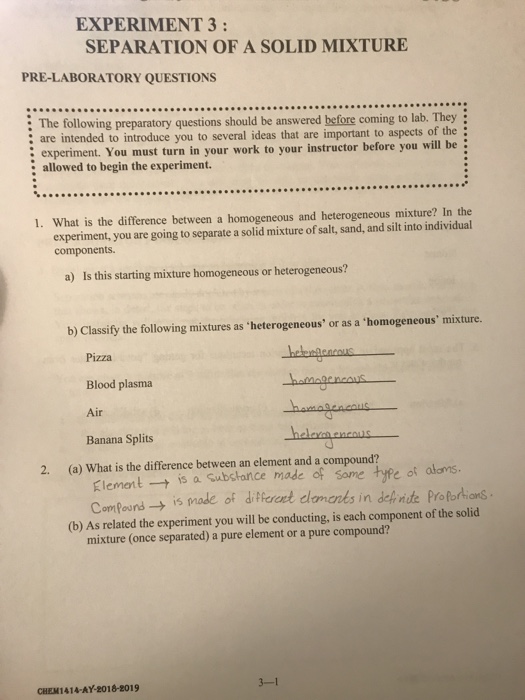


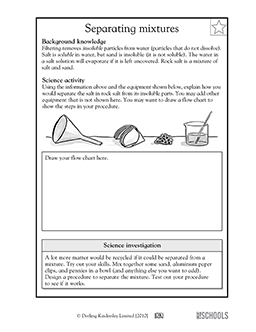

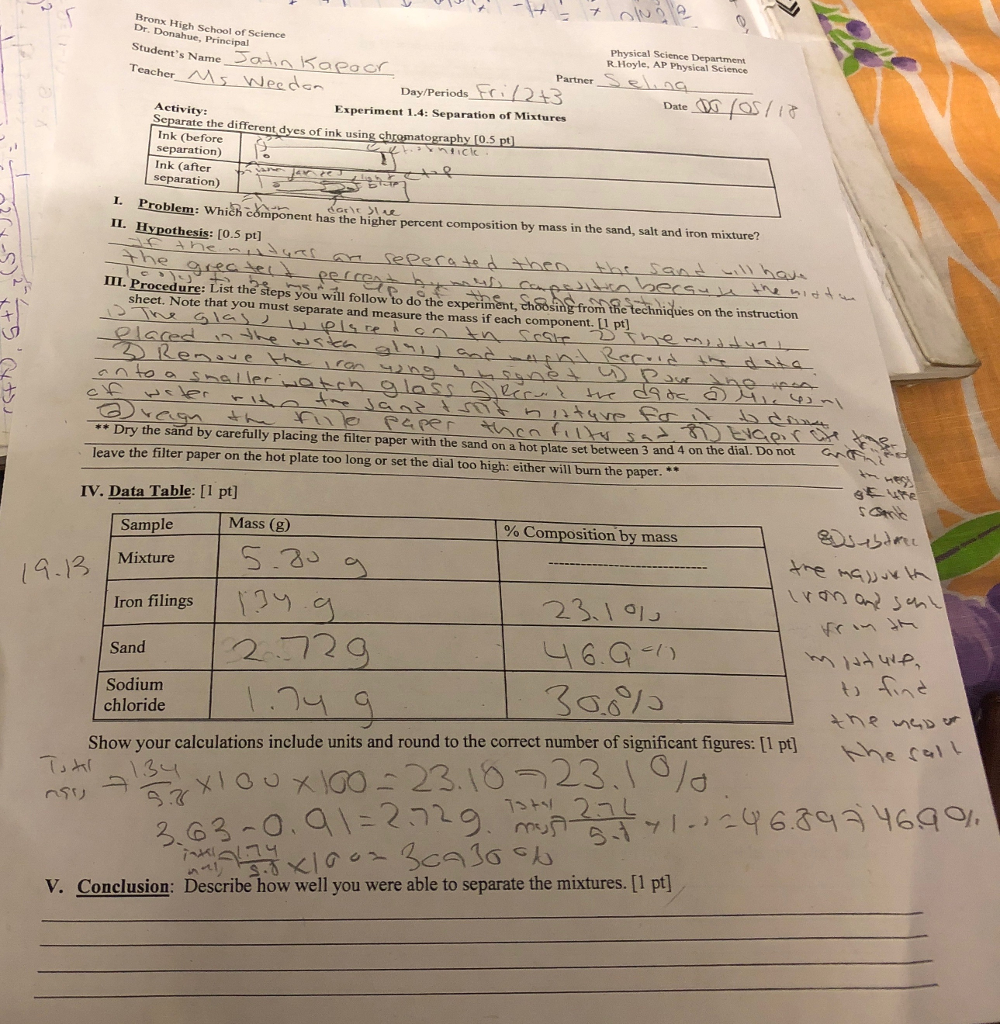
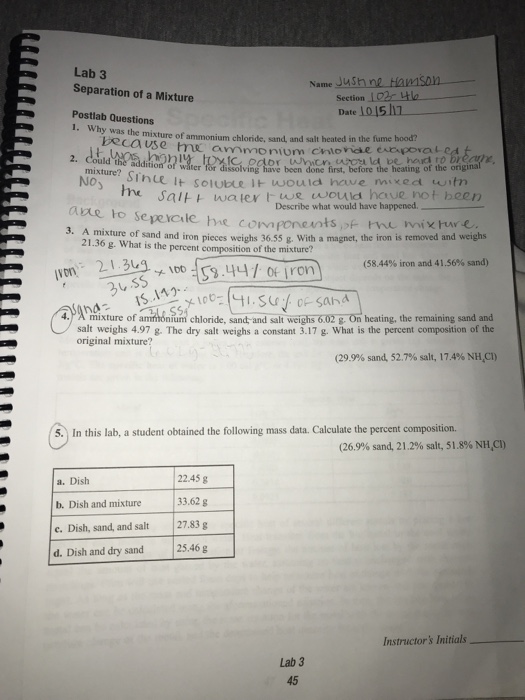

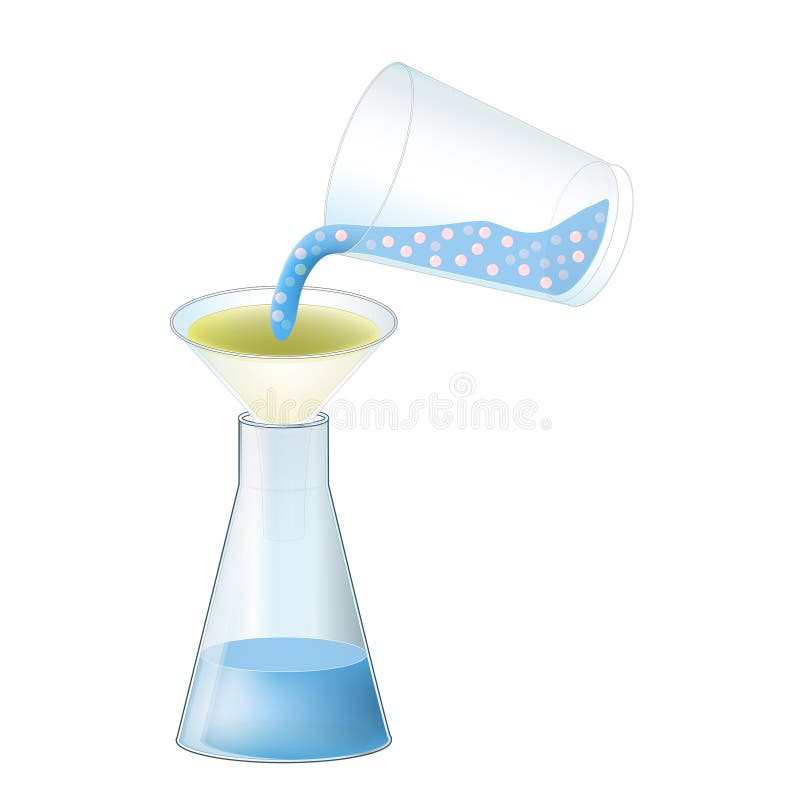

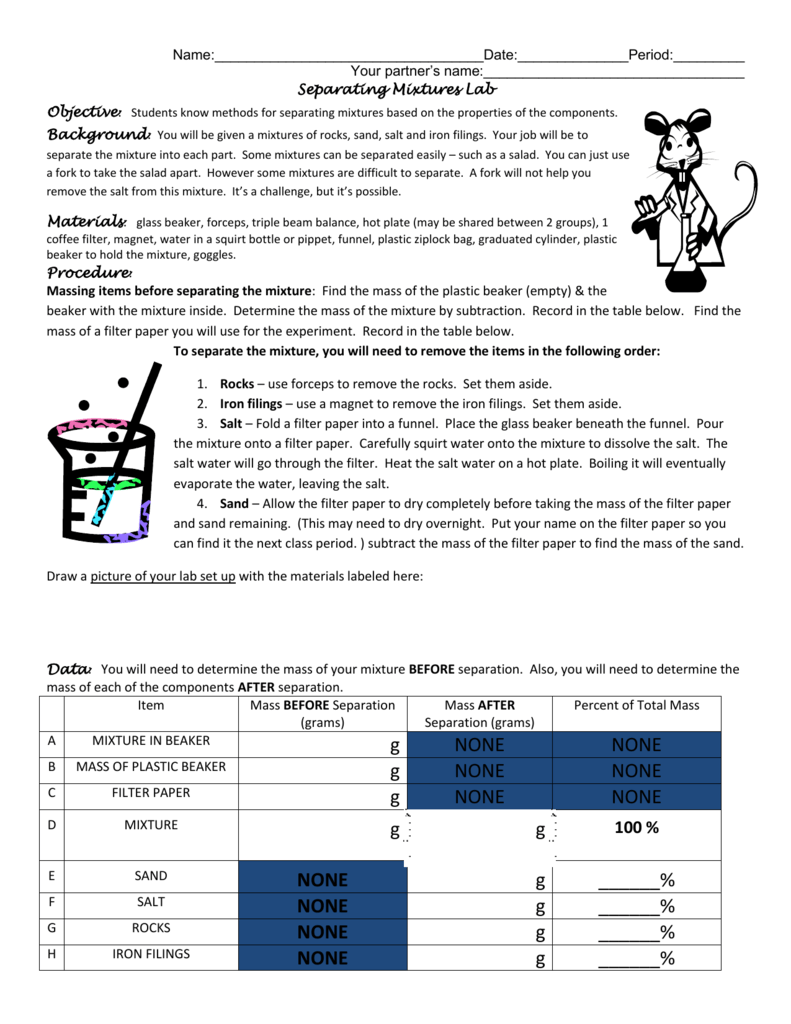

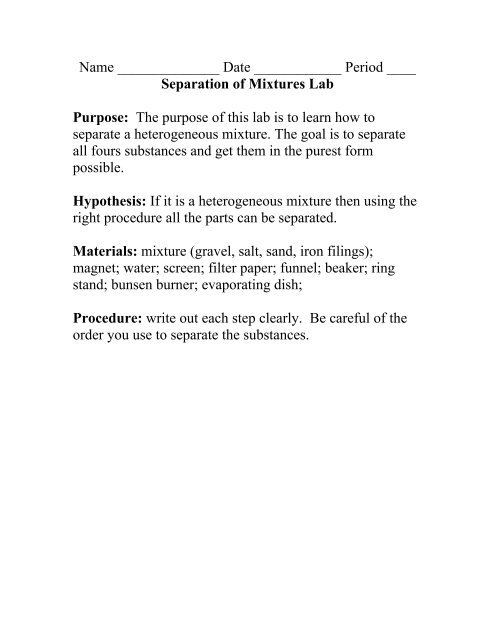


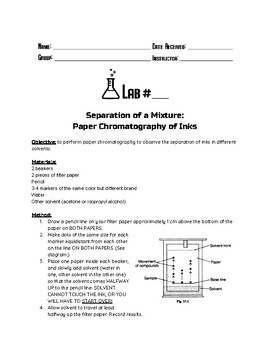







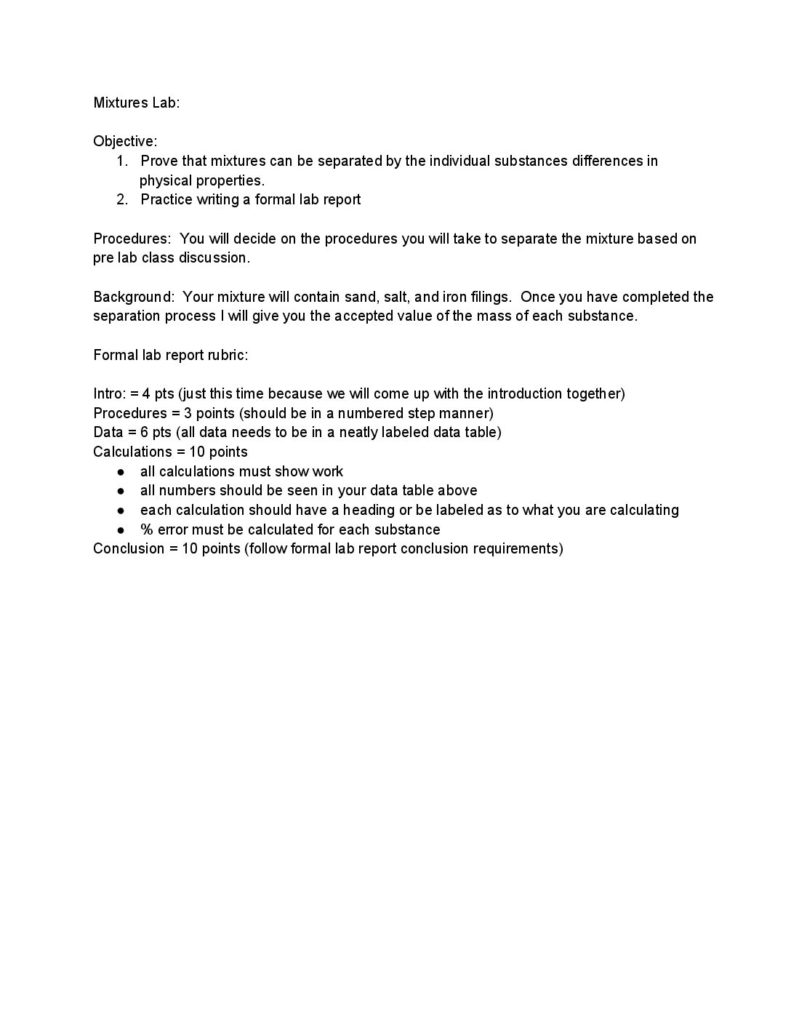
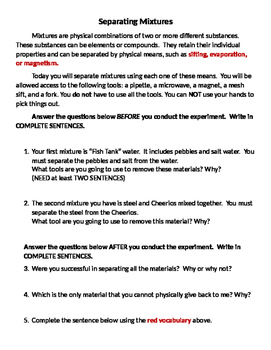
0 Response to "39 separation of mixtures lab"
Post a Comment